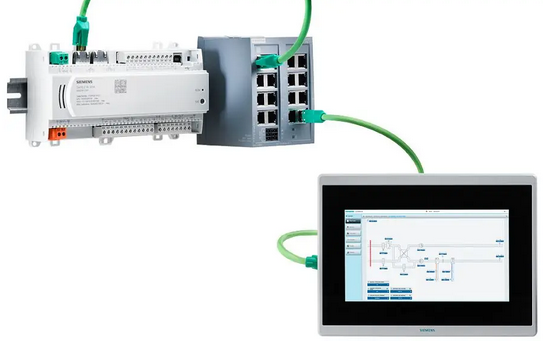The use of industrial Ethernet in the field has become quite common, and
switches, as vital components of networks, play an important role in
today's industrial automation. Industrial switches in the field can be
divided into two types: unmanaged and managed. Unmanaged switches are
typically used for internal networks within devices, such as data
exchange between CPUs and various distributed modules. On the other
hand, managed switches are employed for communication between devices
and factory networks. So, what are the differences between unmanaged
switches and managed switches? Let's delve into this topic today.
1.Unmanaged switches
Unmanaged switches, also known as non-managed switches, are network switching devices that operate at the OSI network reference model's second layer (data link layer). Data forwarding in unmanaged switches is based on MAC addresses. They can identify MAC addresses in data packets and send the data to the corresponding ports based on their internally stored MAC address table. Initially, when the MAC address table is empty, the switch broadcasts the data to all ports. As data is sent and received, it gradually establishes relationships between MAC addresses and ports and updates them as necessary.
Unmanaged switches are plug-and-play devices that do not support routing management. They cannot segment VLANs, and since they do not recognize IP headers, all nodes can only be assigned to the same subnet.
Unmanaged switches are relatively inexpensive and easy to use, making them suitable for internal device networks, such as data exchange among various network nodes in PROFINET.
The following image shows the appearance of Phoenix unmanaged SF switches and SFN switches:

2.Managed Switches
Managed switches, also known as managed switches or managed switches, are in contrast to unmanaged switches. Managed switches operate at the third layer (network layer) of the OSI network reference model, support VLAN segmentation, routing functions, and SNMP protocol (Simple Network Management Protocol), and can be configured via the web.
The ability to segment VLANs is one of the characteristics of managed switches. VLAN stands for "Virtual Local Area Network".
By dividing VLANs, the LAN connected by the switch can be logically divided into different subnets. Each subnet cannot communicate directly with each other, effectively isolating network storms and enhancing network security. VLAN also increases the flexibility of network management, as changes in device network membership can be made through software configuration without physical wiring changes.
Supporting routing functions is another characteristic of managed switches. Routing functions can analyze IP addresses in packets and forward data based on the switch's internal routing table, enabling data exchange between different subnets.
Managed switches provide more functionality compared to unmanaged switches, and are consequently more expensive.
The following image shows the appearance of the Phoenix 2000 series managed switch:


